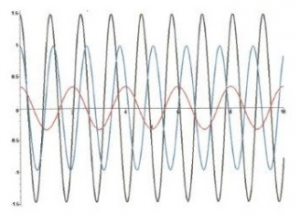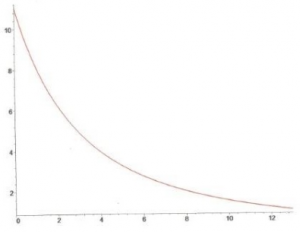Oscillating Spheres
Oscillations are a mathematically very interesting topic. In the Maths Adventure Land, the behaviour of swinging mathematical pendulums can be experienced with the ” Oscillating Spheres” exhibit. As the following figure 1 shows, 13 metal spheres hang from thread pendulums of varying lengths that are attached to a curvilinear suspension.




